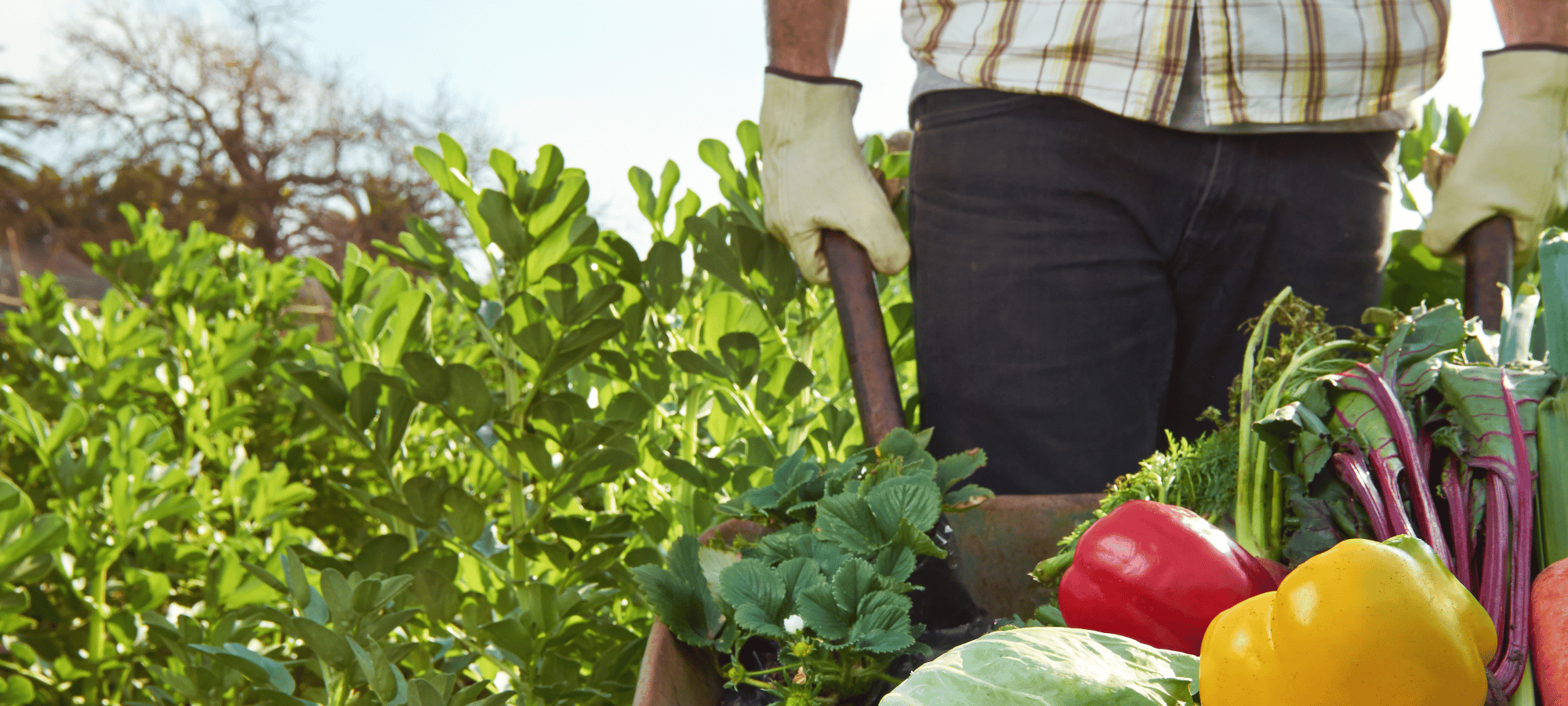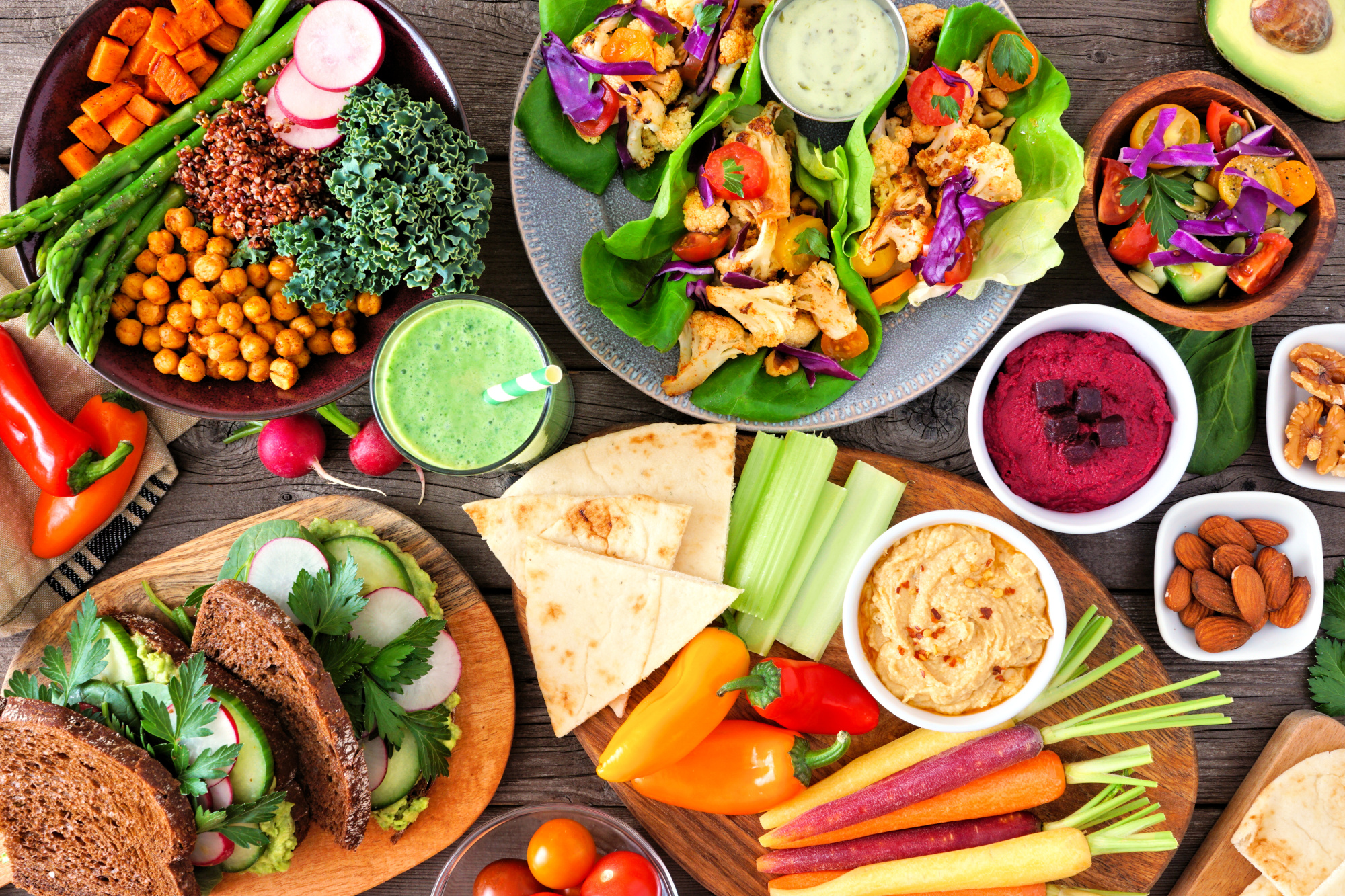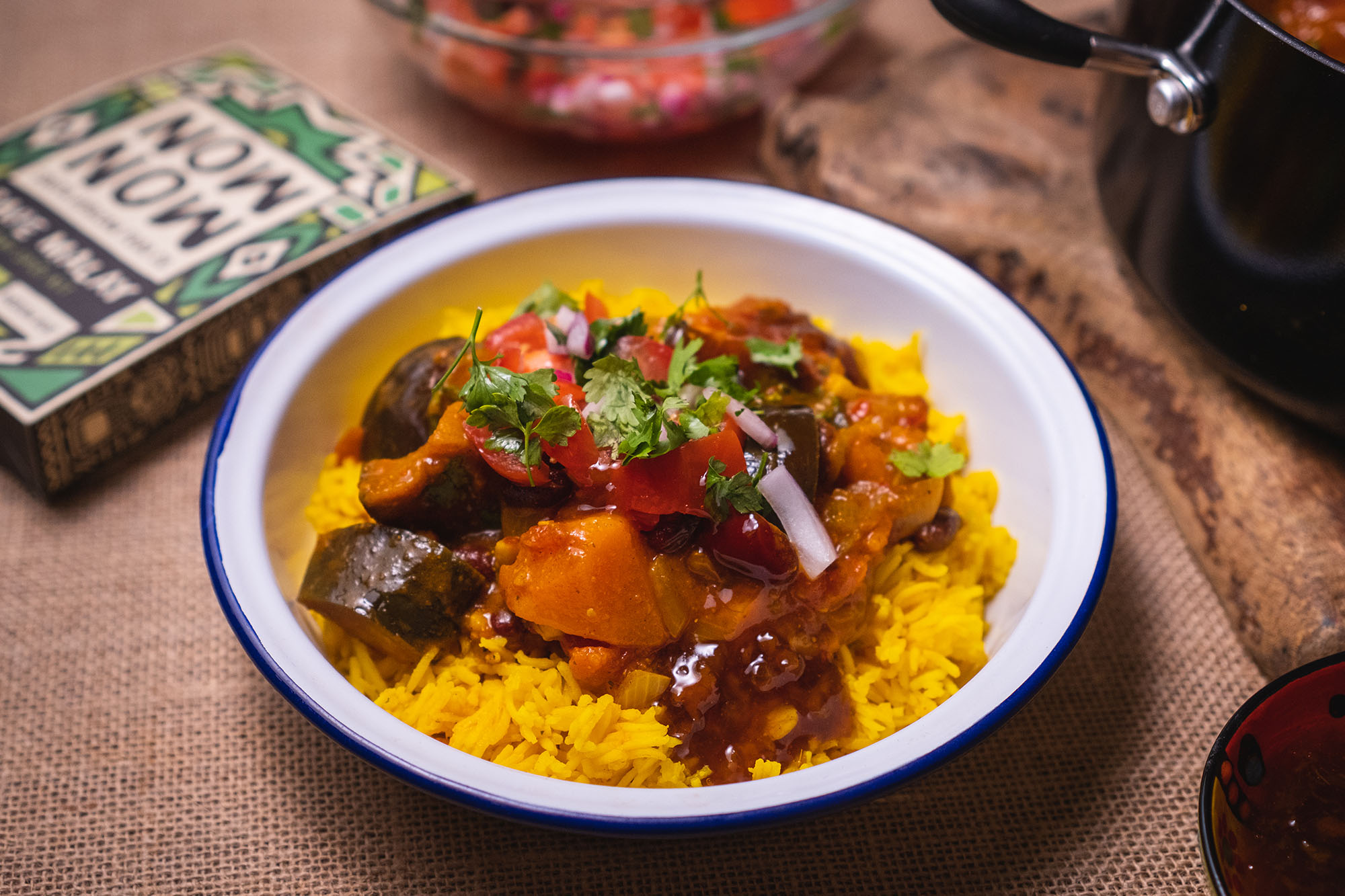This content was provided by Leah Wolfe, Head of Regenerative Education & Content, HowGood and does not necessarily represent the views or positions of ProVeg International. It is published here to add to the conversation on issues relevant to the plant-based sector and our readers.
Introduction
It’s no secret that plant-based eating is on the rise among consumers. In a recent survey, 47% of US consumers identified as flexitarian, meaning that they are reducing their meat and dairy consumption but not eliminating it entirely. This is especially true for those between the ages of 24 and 39 and is often motivated by a desire to reduce environmental footprints.
These flexitarians are seeking plant-based options but they are also prioritising sustainability. Gen Z and Millennials, in particular, want products that align with their values. Collectively, they are a powerful group of consumers, with estimated trillions of dollars to spend in the next two decades.
Because consumers tend to make the shift to plant-based eating for moral, environmental, or health reasons, – plant-based products are expected to adhere to higher expectations from consumers in terms of sustainability, ethics, and health. If not, they are more likely than conventional legacy products to face criticism.
So how can brands formulate truly sustainable plant-based products and communicate transparently to their customers?
Register for our free webinar
This webinar titled, ‘Small changes, big impact: how ingredient decisions affect the sustainability impact of your products’, is happening 15 December 2022, 15:00 CET. ProVeg International in partnership with HowGood will shine a light on some common (and not so common) ingredients, and how to tweak formulations or growing locations in order to reduce carbon emissions or water usage. Register for free today.
Top tips
87% of a food product’s environmental impact occurs before the ingredients have even left the farm gate.12 This means that packaging, processing, transportation, and retail account for a relatively small percentage of social and environmental impact when it comes to food and CPG (consumer packaged goods) products.
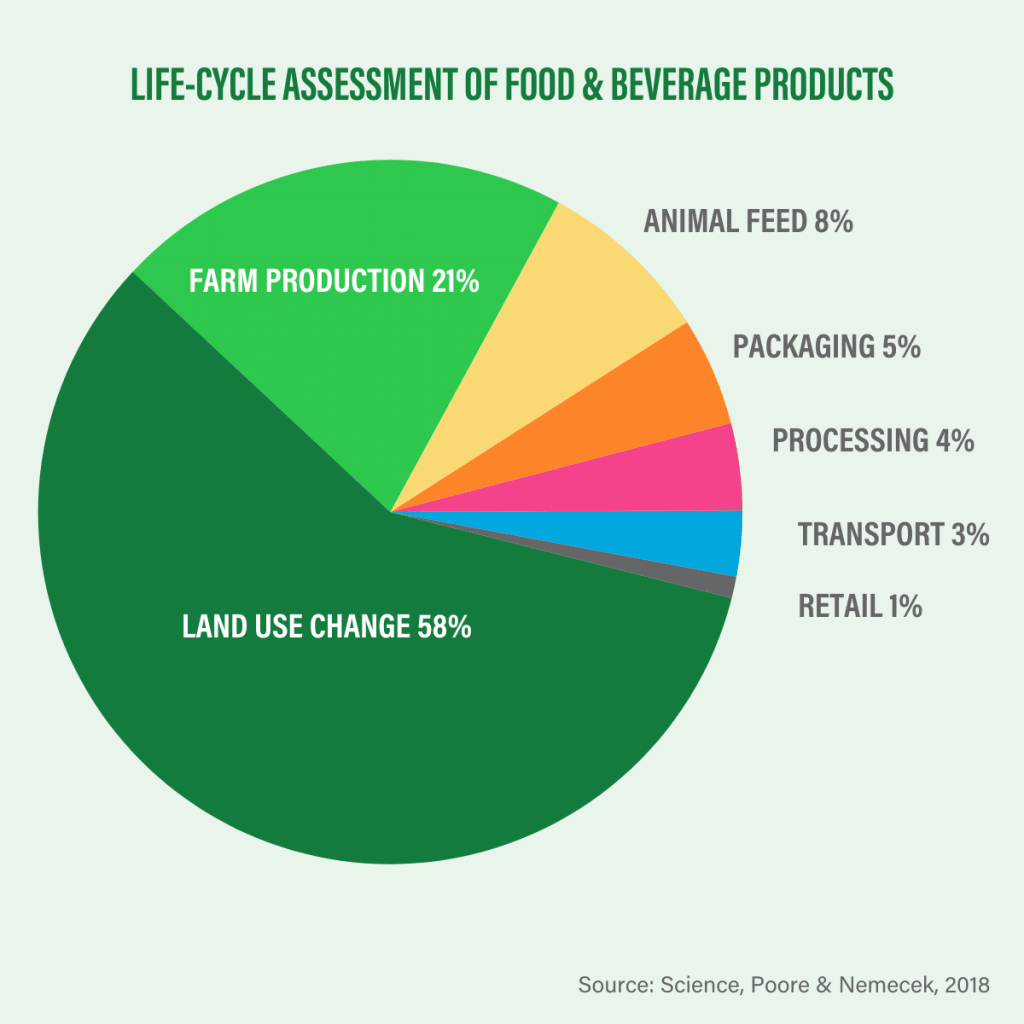
Swap out an ingredient
Ingredient type is one of the most important factors when it comes to environmental and social impact. Certain crops inherently need more water to grow, or more land, or more human labour to harvest.
One of the examples used most often is animal-based versus plant-based products – but even within the plant-based category there is considerable variation. Let’s take a look at cashew milk versus oat milk. Below is a sustainability scorecard powered by HowGood’s sustainability intelligence platform, Latis, which calculates that cashew milk has a cradle-to-farm-gate carbon footprint of 3.81 kilograms of CO2 equivalent per kilogram (kgCO2e/kg) of the finished product.
Cradle-to-farm-gate refers to the emissions caused by the act of growing a specific ingredient before any factory, processing, transportation, or distribution emissions are taken into account. This includes fertiliser inputs, pesticide and herbicide inputs, on-farm fuel needs, tillage, mechanized harvest, electricity needs for storage as well as any on-farm processing, cooling, or fermentation.
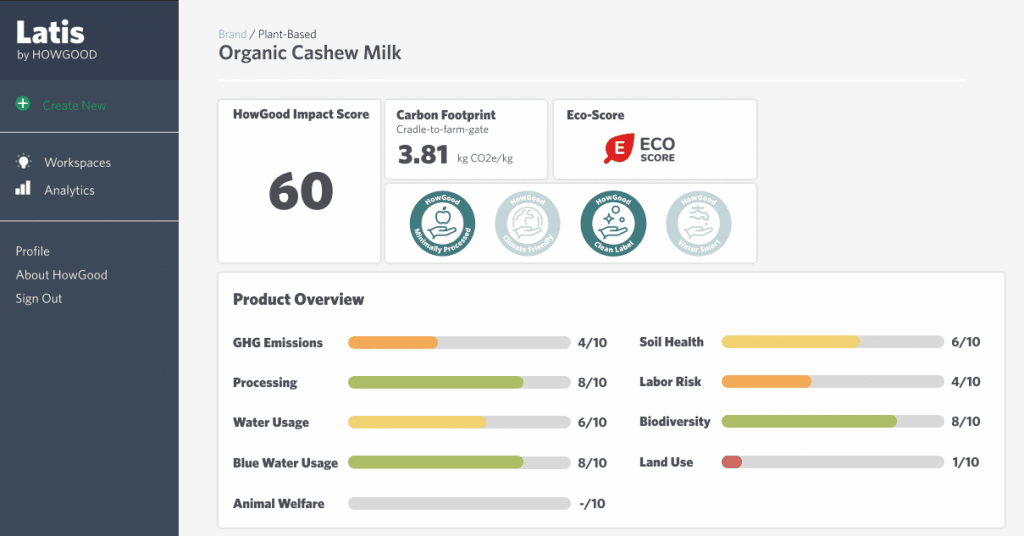
This may be surprising considering that this particular cashew milk example is organic-certified, but the high carbon footprint is largely attributed to the risk of land-use change for cashew production – which organic certification has no influence over. Land-use change in this case refers to the high likelihood of ecosystem destruction and deforestation in order to make way for cashew orchards.
Land-use change is one of the biggest contributors to high cradle-to-farm-gate impact. When ecosystems are cleared or burned to make way for agriculture, a tremendous amount of stored carbon is released into the atmosphere, mostly in the form of carbon dioxide – an estimated 4.8 billion tons each year from 2015 to 2017. To put this into perspective, if deforestation was a country, it would rank third in CO2e emissions, just behind China and the United states.3

As shown in the sustainability scorecard above, simply by changing the main source ingredient from cashews to oats, the carbon footprint is reduced by more than 90%. Oats also require considerably less water and are less likely to degrade soil which is why the overall impact score is much improved at 81 compared to cashew milk’s 60.
Here’s an example of how a plant-based company used HowGood’s Latis platform to discover new ingredients with sustainability and cost-saving benefits:
Case study: sustainable ingredient alternatives
Achieving cost savings while maintaining impact: transitioning from organic tapioca syrup to organic rice syrup
The Challenge
Cost savings were a priority for the R&D team. For any new ingredient change, cost is the product developer’s primary consideration – even when sourcing with sustainability in mind.
The Opportunity
A product developer for plant-based ice cream discovered a new organic rice-syrup supplier with impressive on-farm social and environmental programmes. While they knew that it would be a good alternative from a flavour perspective, they were excited to discover sustainability gains as well, most notably for labour-risk issues.
The Outcome
Shifting from organic tapioca syrup to organic rice syrup not only significantly improved the HowGood Impact Score of their product, it resulted in $500,000 in cost savings.
Here are a few ingredient adjustments that you might want to consider in order to make your product more sustainable:
- Opting for seeds rather than tree nuts when possible, e.g. swapping pumpkin seeds for pine nuts or almonds can greatly reduce water consumption.
- Switching from conventional oil to expeller-pressed or cold-pressed oil, or from a conventional protein isolate to an expeller-pressed protein isolate, reduces the amount of GHG emissions associated with processing.
- Rice paddies emit a large amount of methane, as much as 5kg CO2e per kg of rice. When appropriate, one might consider an alternative – like the West-African grain fonio – that is less carbon-intensive and has the added benefit of increasing biodiversity.
Geography
Changing where the source material is grown can have a significant impact on a variety of sustainability metrics.
Labour risk is a measure of the severity of working conditions in the region where the crops are grown and the number of people affected. Ingredients are considered high-risk when associated with critical low pay (less than $2 per day), forced labour, child labour (any work that precludes children from attending school regularly), and/or bonded labour.
In the cashew-milk example, the ingredient scores very poorly on labour risk, which is unfortunately associated with agricultural production in Vietnam, where the majority of cashews consumed in the United States are produced. This is partially due to the broader working conditions of the country and the hand-processing of cashews in Vietnam, which can be damaging to human skin thanks to the acidity of the surrounding fruit. Oats, on the other hand, are usually sourced for American markets from within the US or Canada, where labour risk is much lower.
Variations in the impact of simply selecting a different location can be seen across several ingredients in the chart below.
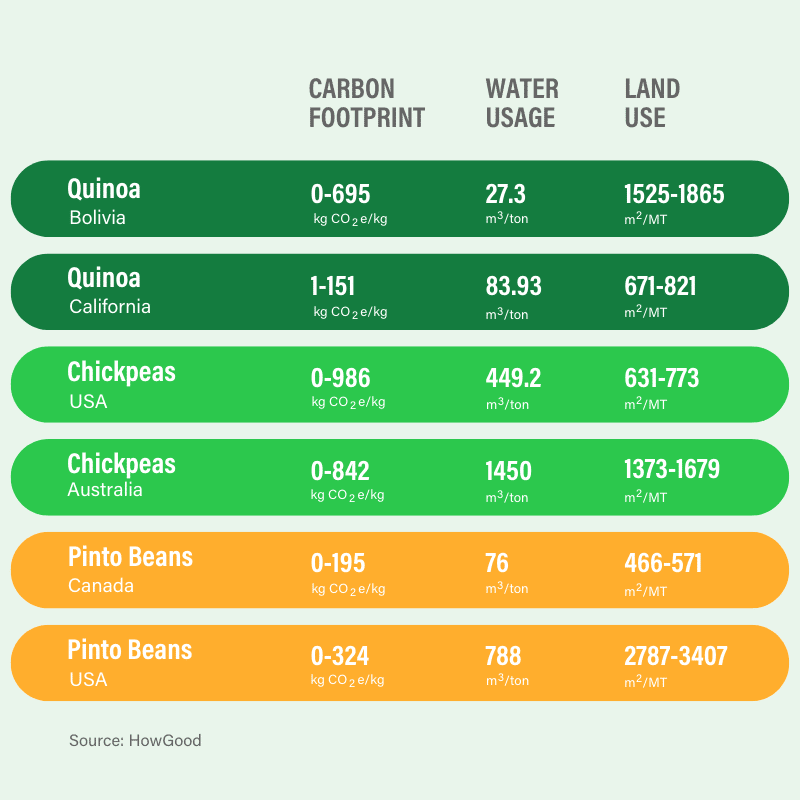
Notice how simply by changing source location, carbon footprint, water usage, and land use all vary greatly. Buying pinto beans grown in the US rather than Canada would result in an estimated ten-fold increase in water usage, and almost six times the land use conversion.
This, of course, is not true across the board for every pinto bean producer in the United States or Canada. Certain farmers grow more sustainably than others, which is where certifications and growing practices come into play.
Here are two changes to source location that can make a significant difference when it comes to product sustainability:
- Change source locations to reduce water usage when possible – the top five water-scarce regions are the Middle East, India, Southern Europe, North Africa, Southern California, and Northern Mexico.
- Avoid sourcing cacao from countries that are strongly associated with labour abuses, such as Côte d’Ivoire, the Dominican Republic, Venezuela, and Indonesia unless they have a third-party certification such as Fair Trade International, Fair for Life, or Regenerative Organic Certification.
Register for our free webinar
This webinar titled, ‘Small changes, big impact: how ingredient decisions affect the sustainability impact of your products’, is happening 15 December 2022, 15:00 CET. ProVeg International in partnership with HowGood will shine a light on some common (and not so common) ingredients, and how to tweak formulations or growing locations in order to reduce carbon emissions or water usage. Register for free today.
Growing practices
Farming practices can have a substantial impact on the environment and farmworkers’ lives. Conventional agricultural production is responsible for a huge proportion of global greenhouse gas emissions, water usage, biodiversity loss, and labour abuses globally. Many agricultural standards and certifications specify the use of good farming practices, but, as demonstrated with the organic cashew example above, it’s extremely difficult for one certification to encompass all of the negative impacts associated with a product.
Working with ingredient suppliers and farmers to engage in regenerative agriculture is one of the most holistic and effective ways to improve product sustainability. Not only does this contribute significantly to protecting and healing the environment, it helps to ensure a resilient supply of the ingredients that brands rely on, by mitigating supply-system risks in the long term.
Certifications to seek out – in addition to engaging with your ingredient suppliers – include Regenerative Organic Certification, Rainforest Alliance, Roundtable on Sustainable Palm Oil, Marine Stewardship Council, and many others.
Conclusion
Ingredient-sourcing decisions are the most important tools for improving product sustainability. Especially when buying at a large scale, a small adjustment to the sourcing location or an additional certification can make a meaningful difference. By focusing on which ingredients are used, where they are sourced from, and how they are produced, brands have the power to drastically reduce their overall footprint and have a positive rather than negative impact on the world.
Plant-based products are not automatically better for people and the planet. Thoughtful and intentional sourcing is critical to ensuring product integrity. It can be overwhelming to tackle sustainability at the ingredient level, especially if there are hundreds or thousands of ingredients in a brand’s portfolio. Luckily, with the right data and actionable insights, it’s possible to create transparent, truly sustainable plant-based products from seed to shelf.
For more tips on to formulate sustainable plant-based products make sure to register for our free webinar, Small changes, big impact: how ingredient decisions affect the sustainability impact of your products.
References
- Poore, J. & T. Nemecek (2018): Reducing food’s environmental impacts through producers and consumers. Science 360(6392), 987–992.
- Crippa, M., E. Solazzo, D. Guizzardi, et al. (2021): Food systems are responsible for a third of global anthropogenic GHG emissions. Nature Food 2(3), 198–209. doi:10.1038/s43016-021-00225-9
- WRI (2018): By the Numbers: The Value of Tropical Forests in the Climate Change Equation. Available at: https://www.wri.org/insights/numbers-value-tropical-forests-climate-change-equation [10.10.2022]
